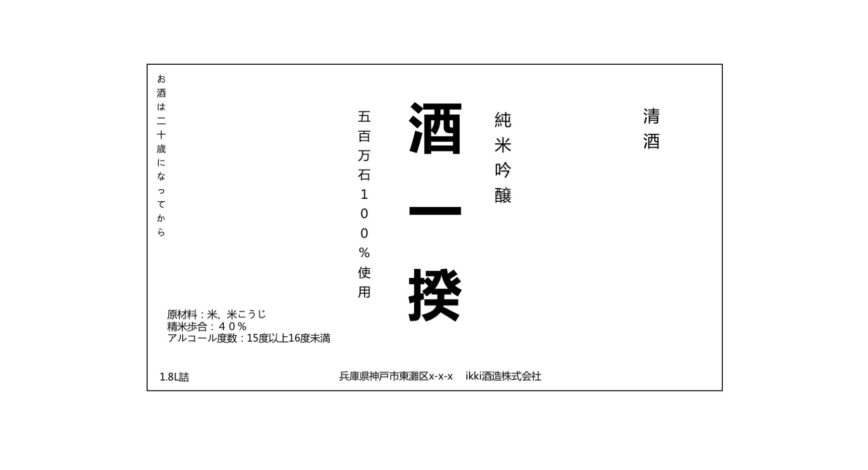
Label
Label is where brewery shows there brewery history or philosophy and also concept of products.
One of the role of label is to show image and concept of products by its design, but it also has important information about its spec, taste and how we enjoy this products from words.
In this section you will know what kind of information normally shown on the labels and you can gain and tell your customers.
Front
- ・Alcohol Content
Alcohol content o the product in percentage
- ・Ingredients
Rice, rice koji and brewed alcohol if used
- ・Type of product and volume
Normally shown as Nihonshu or Seishu as it is
Volume shown in ml
- ・Date of Manufacture
This date is the date when sake is bottled, but not best before date
It is because if the product stored correctly, it does not go bad for next few years
- ・Speciality Designation
When the sake has designated name(Ginjo, Junmai…), it shows according to its classification
- ・Rice Variety
The name of rice used and its usage ration
- ・Sake Name
Name of the sake
- ・Manufacture’s Name and address
Brewery name and the address
Back
- ・Rice Variety
Rice used in the product and its usage ratio
- ・Yeast
Yeast used in the product
- ・Sweetness/Dryness
Normally sake is classified as 5 sweetness/dryness category (might be different according to the classification in each breweries)
Sweet, slightly sweet, medium, slightly dry, dry
- ・Rice Polishing Ration
How much rice polished in the brewing process. (Polishing ration 40% = 60% polished)
- ・Sake Meter Value
It shows tendency of sweetness/dryness
Higher the number it tends to be dry, lower the number it tends to be sweet
- ・Acidity
It shows the level of acidity in Sake.
Higher the number it tends to be rich, lower the number it tends to be light
- ・Amino Acid Content
It shows the level of amino acid contained in Sake.
Higher the number it tends to be tasteful
- ・Recommended Drinking Style
It is a guide how you enjoy sake and show the ideal temperature to drink






